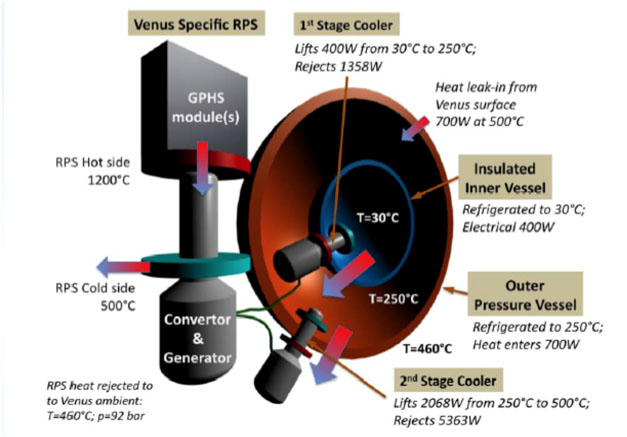Resiliency - Cooling (page 1 of 3)
Overview
Environmental constraints on Venus such as temperature (450 °C) and heavy cloud cover severely limit our ability to use traditional electronic components and energy resources common in other space missions. Our proposed design is based on that presented by Hunter in (1), shown below.

A beta-style Stirling engine located on the exterior of the lander generates mechanical engery that is used to power a two-stage Stirling cooler system. Plutonium Isotope General Purpose Heat (GPHS) units are used to generate a hot side temperate of 1200 °C on the engine, and the Venusian atmosphere is used as a heat sink. The power generated from the main engine can be used to drive two additional Stirling engines in reverse. By applying mechanical input to the engine, heat is transferred from one side of the engine to the other. When these two sides are separated by an insulating capsule layer (as shown in the image above), then the result is a cooling of the inner environment. Our proposed design utilizes two cooling stages to achieve an inner-capsule temperature of 30 °C.
- Stage-1 cooler reduces the inner capsule temperature to 30 °C
- Stage-2 cooler reduces the outer capsule temperature to 300 °C
